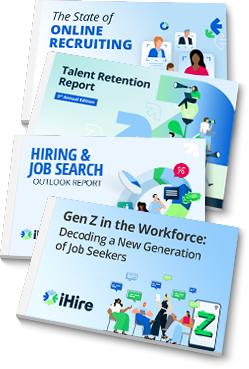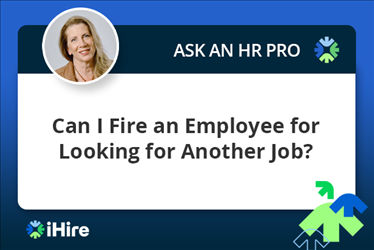- Employer Resources
- |
- Last Updated: October 31, 2025

Ask an HR Pro: What Is Succession Planning?
In our 2025 State of Online Recruiting Report survey, 28.5% of employers told us that they expect an aging/retiring workforce to impact their hiring efforts in the coming year. 32.5% said the same thing about difficulty retaining employees.
What would happen if one of your key employees left, suddenly or otherwise? Would your team be able to carry on, or would their absence bring operations to a halt?
If you’re leaning toward the latter, it’s a clear sign that you need a succession plan.
So, what is succession planning, and how can you implement it in your organization to ensure business continuity?
Chrisanne Bowden, Principal HR Business Partner at iHire, shares her expertise on the topic.
What Is Succession Planning?
“Succession planning is when you identify and develop existing employees to fill key roles within your organization,” said Bowden. “Think of it as creating a pipeline of skilled employees who are ready to step up when a senior position becomes vacant, whether due to retirement, resignation, or promotion.”
This strategic process involves mentoring, training, and providing developmental opportunities to ensure potential successors have the necessary skills, knowledge, and competencies for future roles.
“A strong succession plan is vital for long-term stability and growth. It’s about being proactive, not reactive, when it comes to your most critical roles,” Bowden continued. “When a key leader departs, having a successor ready to step in minimizes disruption and maintains momentum.”
How to Create a Succession Plan
Creating a succession plan doesn’t have to be complicated. By following these high-level steps, you can build a framework that prepares your organization for the future.
“Start by identifying the key positions that are essential for your company’s operations and success. These are typically senior leadership roles, but they can also be specialized positions that are difficult to fill,” recommended Bowden. “Consider which roles, if left vacant, would pose the greatest risk to your business.”
Next, look within your organization for high-potential employees who could fill these critical roles. Evaluate their current performance, leadership potential, and alignment with your company’s values.
“Once you’ve identified potential successors, invest in their growth. Create personalized development plans and career paths that may include mentorship programs, leadership training, and cross-functional projects to build their competencies,” Bowden added. “A succession plan is not a one-time task; it should be a living document that you review and update regularly as your business and employees evolve.”
Why Succession Planning Is Important
A robust succession plan provides numerous benefits beyond simply backfilling a position or replacing a retiring employee. It’s an investment in your people and your company’s future.
“Investing in your employees’ growth shows you value their contributions and see a future for them at your company. This can significantly boost job satisfaction, retention, and loyalty,” Bowden explained. “It also reduces recruitment costs and skills gaps, and helps your business stay ahead of talent shortages.”
When you promote an internal candidate, they bring a deep understanding of your company’s culture, processes, and history.
“This institutional knowledge is invaluable and difficult to replicate with an external hire. It ensures a smoother transition and preserves the unique aspects of your company culture,” said Bowden.
Common Mistakes to Avoid
“One of the biggest pitfalls is waiting too long. Don’t wait until an employee announces their retirement to start planning. Succession planning should be an ongoing, proactive process,” Bowden cautioned.
Other common errors are limiting the talent pool by only considering the most obvious candidates, along with focusing on replacing the person, not the role.
“Clearly define the requirements of the role, and then look for talent across all departments and levels of your organization. You might be surprised by who has the potential to lead,” she advised. “Also, being transparent about the existence of a plan can motivate employees and show them there are opportunities for growth.”
Succession planning invests in your organization’s future. By developing internal talent, you ensure smooth leadership transitions, maintain business continuity, and build a culture of growth.
Explore our Resource Center for more expert tips, and if you’re interested in receiving personalized guidance for succession planning at your organization, schedule a free consultation with Bowden and our team today!
RELATED RESOURCES
Hiring? You're in the Right Place.
- Reach unique talent: 51% of our candidates aren't using other job boards
- Connect your ATS and get 6x more applications with iHire's apply process
- Get matching candidate resumes sent straight to your inbox
We Value Your Privacy




